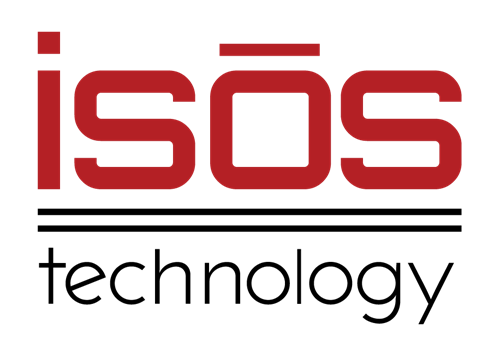 In a world where anyone can open ChatGPT or Grok, the playing field seems level. But it’s not. Because what you get out of these tools isn’t just about the technology—it’s about you.
In a world where anyone can open ChatGPT or Grok, the playing field seems level. But it’s not. Because what you get out of these tools isn’t just about the technology—it’s about you.
LLMs don't think. They predict. Based on your input, they generate the most likely next words, ideas, or insights. So, if your prompt is generic, the output will be too. But if your prompt is thoughtful, detailed, and driven by your unique perspective? That’s when AI becomes a real strategic asset.
Why coaches and servant leaders Are prompting powerhouses
Coaches and servant leaders already know what many people miss: the quality of a response depends on the quality of the question.
You know how to:
-
Ask open-ended questions.
-
Leave space for gray areas.
-
Be intentional about tone and structure.
-
Show curiosity that invites reflection.
These same skills apply when working with LLMs. The way you frame a prompt—your clarity, your purpose, your tone—shapes the answer. You’ve trained yourself to guide people into deeper thinking. Now you can guide AI in the same way.
Prompting in action: Two approaches, two results
🟡 Prompt A:
“How do I improve team engagement?”
🟢 Prompt B:
“Act as an executive coach. I lead a remote team of 12 with recent drops in engagement. My goal is to design a 90-day plan with both quick wins and long-term culture shifts. Provide recommendations in a table with columns for action, timeline, and intended impact.”
Prompt B includes:
-
Context (remote team, drop in engagement).
-
Perspective (executive coach).
-
Goal (a 90-day plan).
-
Output format (a table with specific columns).
Same topic. Radically different output quality.
The anatomy of a high-impact prompt
Here’s your go-to checklist when prompting with purpose:
Context: Set the stage. Who, what, when, where, and why. Don’t make the model guess.
Goal: Be explicit. What do you want to walk away with? A strategy? A list? A plan? A new way of seeing something?
Perspective: Specify who the AI should “be.” A coach? A CMO? A senior engineer? This shapes tone and content.
Constraints: Add any relevant boundaries: budget, time, audience size, or sensitivity.
Output Format: Do you want bullets? A table? A paragraph? A markdown outline? Say so.
Voice & Tone: Optional—but powerful. Especially when you're ghostwriting, communicating with stakeholders, or matching brand voice.
The more clearly you communicate the shape of what you're looking for, the better the LLM can deliver it—on the first try. The LLM is capable of complex, nuanced thinking—but only if you are.
Helpful tip: AI is only as strategic as you Are
AI won’t think for you—but it will think with you.
If you're a leader, coach, or curious communicator, you already know how to frame better questions. Now, apply that same thinking to your prompts. Because prompting isn’t just a tech skill—it’s a modern leadership skill.
Done right, it's not just about getting information—it's about accelerating insight.
Prompting cheat sheet for leaders
Another helpful resource is this cheat sheet designed for coaches, leaders, facilitators, strategists, and curious professionals who want to get more depth, clarity, and strategic insight from AI tools like ChatGPT, Claude, or Gemini.
If you’ve ever walked away from an AI response thinking, “That’s not quite it,” chances are your prompt wasn’t wrong—it just wasn’t specific enough. This guide is here to fix that.
How to use it
Think of this as your AI conversation playbook. Use it when:
-
You’re planning a strategy session or team meeting.
-
You want to generate ideas, frameworks, or plans—but need a sounding board.
-
You’re creating content, coaching someone, or thinking through a complex decision.
-
You want the AI to think with you, not just for you.
Start by using the Prompt Template on the second page, then fine-tune using the 6 Elements of a High-Impact Prompt. You’ll get sharper, more useful outputs—and spend less time editing AI-generated fluff.
Whether you're guiding teams, shaping strategy, or just exploring new ideas—this sheet will help you turn better questions into better outcomes.
The six elements of a high-impact prompt
1. Context
Set the scene. Give the LLM the who, what, where, when, and why.
-
Who’s involved?
-
What’s the situation?
-
What background is relevant?
Example: “I lead a remote software team of 12 developers across 3 time zones.”
2. Goal
Be crystal clear on what outcome you want.
-
What do you want from the model?
-
What problem are you solving?
Example: “Help me design a 90-day engagement plan.”
3. Perspective
Assign a role or persona to guide tone and approach.
-
Coach
-
C-suite leader
-
Brand strategist
-
Educator
Example: “Act as a leadership coach who specializes in hybrid teams.”
4. Constraints
Define boundaries to guide the response.
-
Budget limits
-
Timeframes
-
Audience needs
-
Sensitivities
Example: “Focus on high-impact tactics under $5,000 with minimal lift from the engineering team.”
5. Output format
Tell the model how to deliver the answer.
-
Bullet points
-
Table format
-
Paragraph summary
-
Step-by-step plan
Example: “List your response as a table with columns for action, owner, and timeline.”
6. Voice & tone (Optional—but powerful)
Match your voice or brand tone.
-
Professional? Conversational? Inspirational?
Example: “Write in a concise, executive-ready tone.”
A prompt template you can steal
Act as a [role] supporting [who/what situation]. My goal is to [goal]. Provide recommendations within these constraints: [constraints]. Format the response as [format]. Use a [tone] voice.
Example: “Act as a leadership coach supporting a new VP managing a disengaged remote team. My goal is to develop a 90-day re-engagement plan. Stay under a $10K budget and avoid high-lift initiatives. Present your recommendations in a table with quick wins, timelines, and owners. Keep the tone clear and encouraging.”
BONUS: Coach-style prompts to spark better AI responses
Use these open-ended starters to get richer insights:
-
“What questions should I be asking about…?”
-
“What are some overlooked factors that might be affecting…?”
-
“What patterns could emerge from…?”
-
“What would a coach/strategist/team lead consider in this situation?”
Final tip
Treat your prompt like a leadership brief. The clearer your instructions, the more strategic the AI becomes.
Sign up to receive more great content
Learn more about Atlassian and how Isos can help by signing up to receive our latest blogs, eBooks, whitepapers and more.














